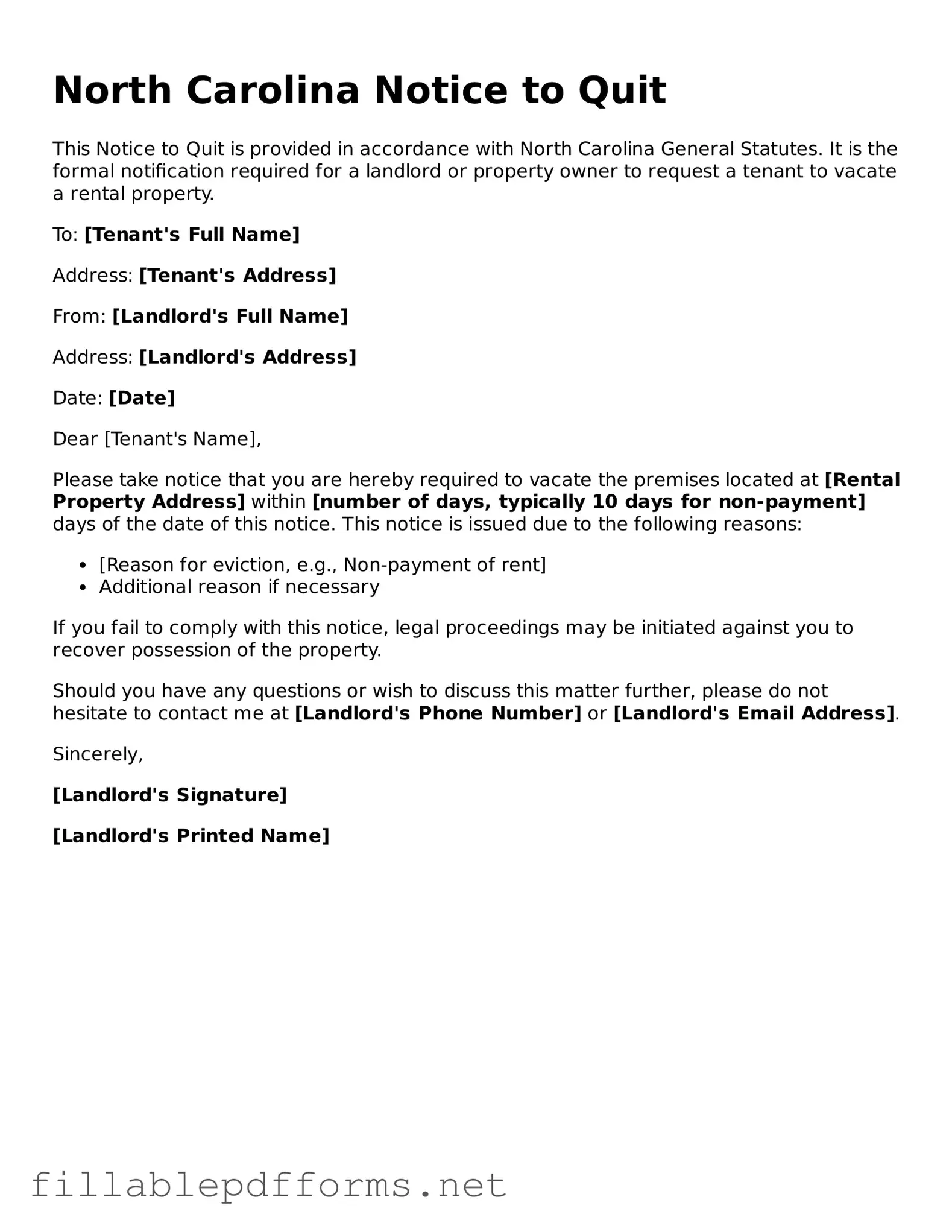The North Carolina Notice to Quit form plays a crucial role in the landlord-tenant relationship, serving as a formal communication tool that initiates the eviction process. This document is essential for landlords who seek to terminate a lease agreement and reclaim their property. It outlines the reasons for the eviction, which may include non-payment of rent, lease violations, or the expiration of a rental agreement. Importantly, the form specifies the time frame within which the tenant must vacate the premises, ensuring that both parties are aware of their rights and responsibilities. Additionally, the Notice to Quit must be delivered in a specific manner, whether through personal service or certified mail, to ensure that it is legally recognized. Understanding the intricacies of this form is vital for both landlords and tenants, as it can significantly impact the eviction process and subsequent legal proceedings. By adhering to the guidelines set forth in this notice, landlords can facilitate a smoother transition while tenants can better navigate their options and rights.
